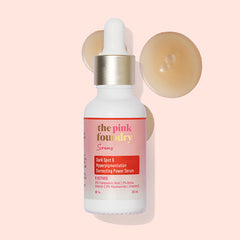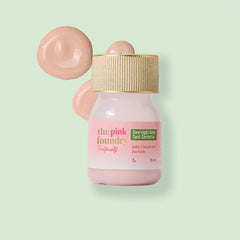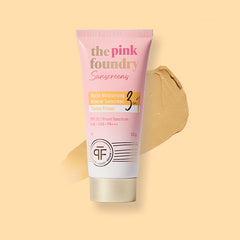Decoding the Science: Which Bacteria Triggers Acne?
Acne and pimples can hamper your confidence and put you under emotional stress. The key to treating acne breakouts is finding out the reason behind it. Once you identify you have bacterial acne, you will have to find the right method of treating it. Scroll through this article to understand more about bacterial acne and how to get rid of them.
Introduction to acne and the role of bacteria
People with oily skin experience a higher amount of sebum production in the body. As dust, dirt, and grime block the pores, bacteria get trapped below the skin layers. This triggers acne breakouts on the skin.
Types of bacteria that can cause acne
Primarily, researchers have found a key type of acne causing bacteria. If you are wondering ‘acne is caused by which bacteria’, Propionibacterium is often considered to be a primary reason. This type of bacteria is usually present in the skin pores.
It thrives on sebum as an energy source. As a result, it engages the body in an immune response that causes inflammation.
Propionibacterium thrives on the skin without causing any harm. Therefore, people with and without acne have this bacteria on their skin. This type of bacteria, along with other commensal bacteria, helps keep your skin healthy.
But, in certain environments, this bacteria can cause acne. Typically, it will trigger acne in the presence of excess sebum. But, this type of bacteria is not contagious and does not travel from one person to another to spread acne breakouts.
Also Read: How to Reduce the Redness of Acne and Pimples?
Treatments for bacterial acne
The professional treatment methods available for curing bacterial acne are as follows:
- Phototherapy and Laser Therapy: Light-based therapies, including laser or blue light treatments, can reduce inflammation by targeting the bacteria that cause pimples.
- Chemical Peels: Chemical peels involve using acids to exfoliate the uppermost layer of the skin. It helps in unclogging pores so that the number of acne lesions minimises.
- Microdermabrasion: People with mild bacterial acne can benefit from microdermabrasion. It involves gently exfoliating the surface of the skin to get rid of dead cells on the skin. As a result, it also clears up blocked pores and reduces inflammation.
Preventing bacterial acne outbreaks
If you want to prevent bacterial acne breakouts, you have to rely on a proper skincare routine. One of the most important skincare products for people with bacterial acne is a good face wash. The Pink Foundry has introduced the Clearing & Calming Acne Face Wash for individuals with acne-prone skin.
The benefits of using this facewash are as follows:
- Provides deep cleaning to reduce excess oil and sebum production
- Eliminates harmful bacteria and dirt from the surface of the skin to keep pores unblocked
- Nourishes and soothes inflamed and irritated skin
- Removes dead skin cells from the face with gentle exfoliation
- Promotes hydrated & healthy skin by improving skin texture
You should use this face wash regularly and lather your face for 60 seconds. It will ensure that the cleanser can penetrate through the layers of your skin and perform well.
Some other tips for keeping bacteria that cause pimples in check are as follows:
- Always wash your face after performing any physical activity that makes you sweat.
- Don’t go to bed without removing makeup from your face.
- Never squeeze or pop your pimples because it will only make the acne worse.
Also read: Understanding fungal acne
Conclusion
Bacterial acne will no longer be a cause of concern if you follow the right skincare routine. Using a proper face wash at least twice a day can help you achieve your goal of clear skin. After using a face wash, you should also use a good moisturiser to provide adequate nourishment to your skin. Moisturising your skin and keeping it hydrated is an essential part of the entire skincare routine, and make sure you always use a moisturiser that serves the purpose completely.
FAQs:
1. What are the symptoms of bacterial acne?
Some prominent symptoms of bacterial acne include redness and tenderness. Bacteria usually cause inflamed pimples, pustules, and cysts. Moreover, bacterial acne is more likely to appear on the chin, nose, and forehead.
2. How long can bacterial acne stay on the face?
Bacterial acne can last on the face for three months or even longer. Usually, the time required for bacterial acne to clear up will depend on the treatment method.
3. What are the ways of preventing bacterial acne from spreading?
Washing the face twice a day can help clear up bacterial acne faster. But remember to choose a face wash suitable for acne-prone skin. You must avoid picking or popping your bacterial pimples to prevent them from spreading. Additionally, keeping your hair clean is necessary for controlling bacterial acne.
4. What is the difference between bacterial and fungal acne?
Bacterial acne is commonly found on the face, arms, chest, and several other parts of the body. The size of bacterial acne will vary, and they often begin as whiteheads or blackheads. Fungal acne appears on the skin more consistently. These small, red bumps are usually available on the chest, upper arms, and back. But fungal acne rarely shows up on the face.
5. Is bacterial acne contagious?
Bacterial acne is not contagious. Therefore, you won’t get bacterial acne by coming in contact with someone who has it.















